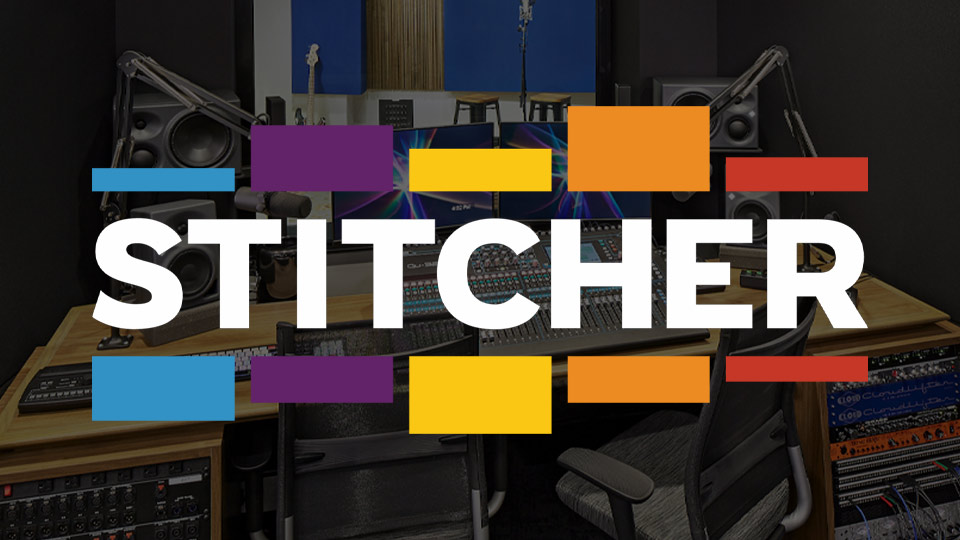
Photographer: John Muggenborg Photography
A New and Better Facility
Podcast network Stitcher recently moved into its new headquarters in Midtown Manhattan, building out a 2,000-square-foot production complex comprising three studios, two edit rooms and two iso booths designed in concert with WSDG Walters-Storyk Design Group. The new facilities have been outfitted to accommodate Stitcher’s typical workflow, which can often involve collaboration between talent, producers and engineers at the company’s offices in Los Angeles and San Francisco.
Romina Larregina, partner, director of production at WSDG, reports that her biggest challenge was ensuring consistency between the new studio spaces. “One of the things that Stitcher looked for was identical sound in every room. That was challenging, to make sure that the reverb time was the same in all the studios, even though the shapes, sizes and volumes were different,” she says.
The floating floor, room-within-a-room design provides critical isolation for speech recording, both from the potentially noisy neighborhood, where the company occupies an entire floor in a building overlooking Bryant Park, as well as between studios. To achieve consistent responses within each space, WSDG implemented custom low frequency absorption, soffits, ceiling treatment and corner treatments to target specific frequencies, says Larregina. WSDG installed RPG’s hybrid BAD diffusion/absorption panels at the listening position in each control room, she adds.
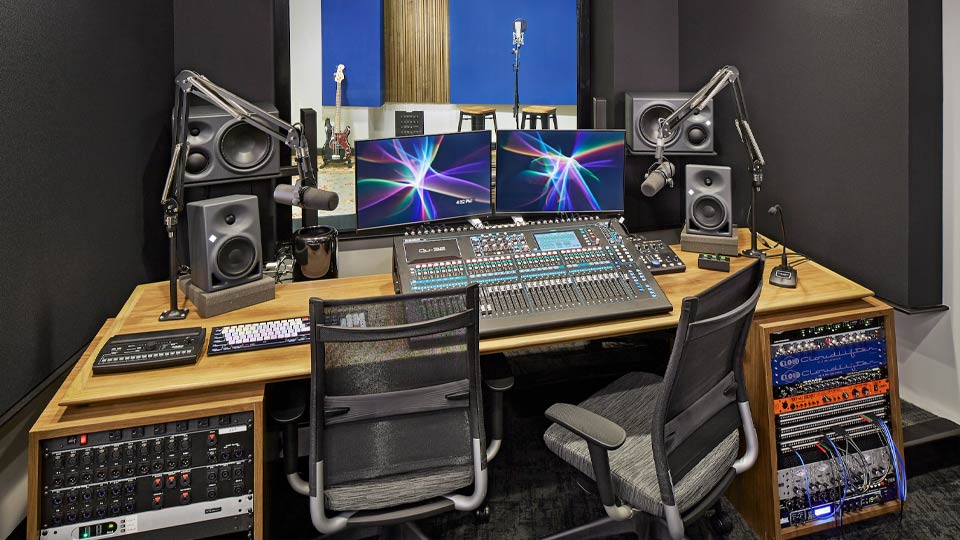
Photographer: John Muggenborg Photography
The Storage
According to John DeLore, senior production manager at Stitcher’s New York office, the choices of audio technology at the new facility were a combination of recommendations from Larregina and the WSDG staff and from Stitcher’s Los Angeles and New York teams. Key to the company’s content creation workflow is a Dropbox scheme implemented by Dave Seidel, Stitcher lead systems engineer, he says.
Every studio is hooked up to an SNS (Studio Network Solutions) EVO shared storage server hosting Dropbox, DeLore explains. Those Dropbox folders are synchronized everywhere within Stitcher’s network, enabling engineers, producers, hosts and other contributors to collaborate from multiple locations, handing off and updating audio files as work progresses.
While the Stitcher app is one of the preeminent podcast listening platforms–it has been described as the most popular alternative to the default Apple podcast app–Stitcher is also a content network with a large catalogue of original programming. Much more than simply spoken word, Stitcher Premium shows such as Wolverine: The Long Night, Marvel’s first scripted podcast, and Stranglers, a documentary series on the Boston Strangler that DeLore produced, feature layers of sound design and custom music, produced in-house.
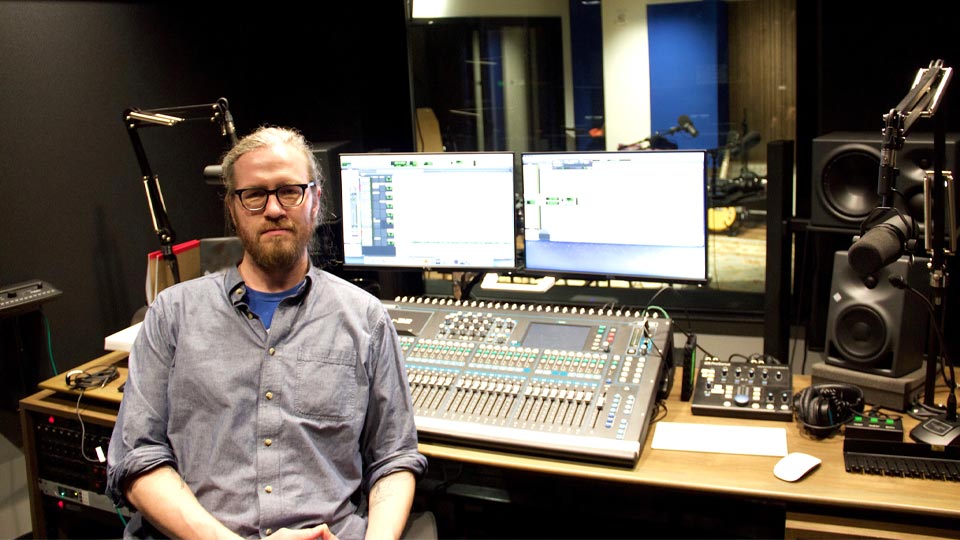
Photographer: John Muggenborg Photography
The Tech
“Our belief here is that the future of the medium will mirror TV and film,” says DeLore. “As the marketplace becomes more and more crowded with content, attention to technical and artistic details will be a big part of creating content that stands apart from the rest.”
Voice recording may take place in one room, editing in another and mixing in yet another, so certain pieces of gear are standardized at the new facility and between Stitcher locations. Each of the new control rooms features an Allen & Heath Qu-16 console, the desk of choice at the L.A. facility, DeLore reports. “It has a good reputation, good sound, it’s solidly built and doesn’t crash. We love that it’s got the Qu-Drive function; we can hook up a drive and do a multitrack backup in parallel with Pro Tools,” he says.
Microphones throughout are Shure SM7B dynamics, paired with Cloud Cloudlifter CL-4 mic activators to enhance and boost the signal level going into Pro Tools, without noise or artifacts, says DeLore. “It’s a flat mic, really clear, with no coloration. We have other mics in our closet in case somebody wants to come in and use a U 87 or an RE20.”
Each of the three studio control rooms and the two edit bays also include a pair of arm-mounted SM7s, he says, for added flexibility. Mimicking the company’s West Coast Earwolf studio setup, “The engineer can be on-mic from the control room” if desired, he says. “And if the interviewer wants to engineer, we have mics in the room.”
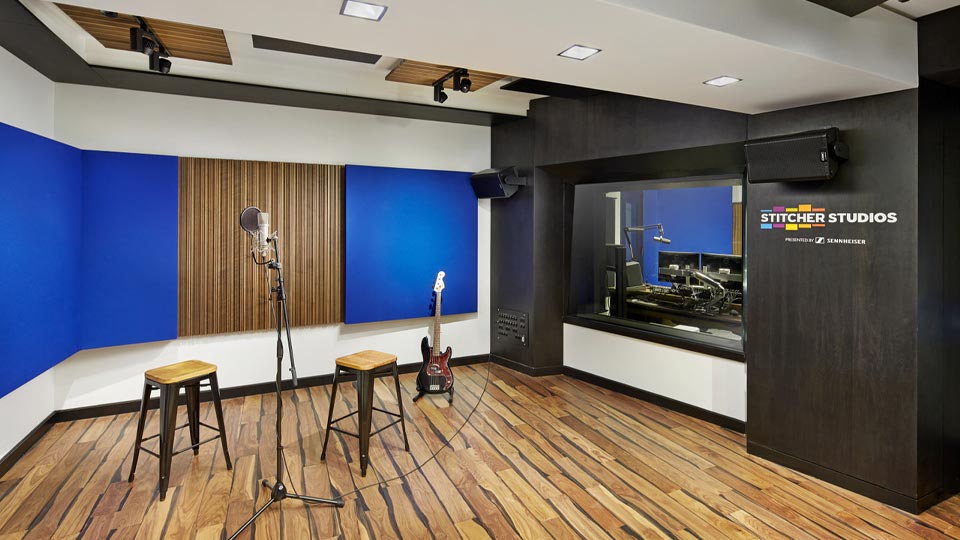
Photographer: John Muggenborg Photography
Conversely, computer screens enable remote operation of Pro Tools from the recording spaces. “The Allen & Heath boards have Bluetooth remote capabilities from a tablet, so we’ve also experimented with that,” says DeLore.
About 75 percent of sessions involve just a host and a guest, he says, in person or on the phone (the studios are equipped with Telos Hx series telephone hybrid units). For that reason, the control rooms offer two channels of AEA RPQ2 mic preamps. “It’s giving us a little extra juice and a little extra color and warmth,” he says.
Studio A, a larger space that incorporates an iso booth and a sound lock, is multi-use. “It’s designed for large ensemble recordings, for original podcast score recording and for doing a live music podcast, hopefully; nobody has cracked that code yet, but it’s going to happen and I’m sure we’ll be in that space.”
Control room A houses an A&H Qu-32, for its extra inputs, and additional outboard, including a Grace Design m103 channel strip. “Whether you’re recording a voice for a spoken word podcast or a musical lead vocalist, we wanted Studio A to have some boutique options in the mic pre department.”
Additional processing for music production includes a Warm Audio Tone Beast, a Foote Control Systems P3S stereo compressor and a Lexicon MX400 reverb. “Lexicon is great and we’re all familiar with it,” says DeLore, whose background includes time working at Right Track Recording in Manhattan, as well as Gimlet Media and WNYC Radio. Since launching the facility, Stitcher has added a Boston upright piano, drum kit and Ampeg bass amp, he also reports.
Monitoring in the studios and edit rooms, on Larregina’s recommendation, includes Neumann KH 120 two-way speakers, while the A room additionally features a pair of three-way Neumann KH 310 monitors. “At the point of ingest, we’re just listening to voice,” says DeLore, “so we need to be able to hear everything at a good listening volume, and the Neumann is a clean speaker. The 310s are designed to provide a wider sweet spot, which is ideal for podcasts which can have production teams of four to five people who need to all sit in the studio and be able to hear the same mix.” A PreSonus Monitor Station V2 manages source selection and speaker level control in every room.
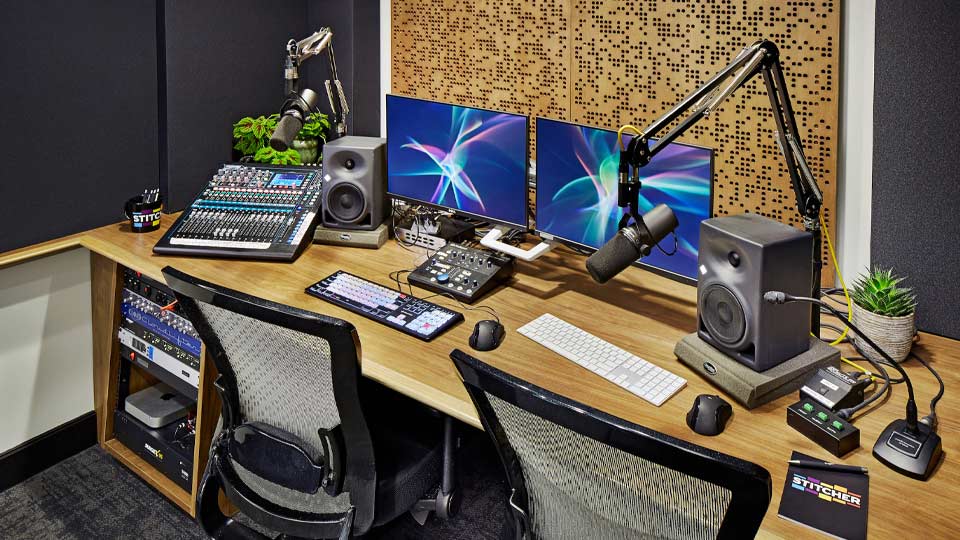
Photographer: John Muggenborg Photography
All of the studios and control rooms feature Sennheiser headphones. “Sennheiser are the official headphones of Stitcher. As part of that partnership, we also stocked our mic closet with a nice selection of Sennheiser and Neumann microphones.”
In addition to the studios and edit rooms are a pair of iso booths where producers can escape for a mix or playback session. Summing up the entire facility, DeLore notes, “Everything is set up with as much flexibility as we could build into it.”
